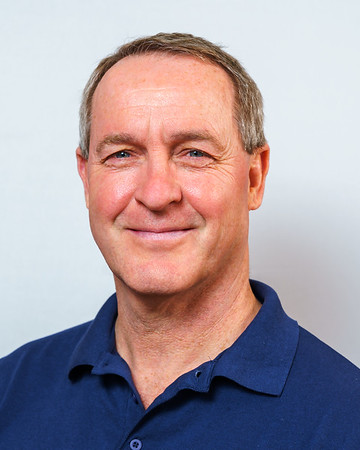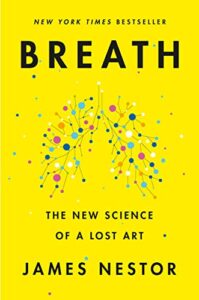In Breath: The New Science of a Lost Art, James Nestor recounts a story of profound personal transformation. After decades battered by wheezy breath, serial pneumonia, chronic stress, and poor sleep, Nestor opened his airways, healed his lungs, calmed his mind, and experienced restorative rest. All by practicing breathing techniques, both ancient and contemporary.
Along the way, Nestor treats us to a fascinating account of the history of breathing science, replete with surprising insights into human physiology, sketches of a delightful cast of respiration explorers he dubs “pulmonauts,” and sobering evidence of how the impact of contemporary life has rendered humans "the worst breathers on the planet."
In short, Breath delivers a rollicking adventure with a vital underlying theme: “Breathing is a missing pillar of health.”
A History of Breathing Science
In Breath, we learn the study of how breathing impacts health is not new. It's ancient.
Nestor quotes Chinese Taoists texts dated to 400 BCE focusing entirely on breathing, “how it could kill us or heal us, depending on how we used it.” Across centuries, in India, Tibet, China, and for indigenous peoples in North and South America, breathing provided “powerful medicine.”
But a cyclic pattern runs through this history of breathing science. Techniques were discovered, documented, and lost. Then rediscovered and forgotten again. From this pattern comes the “Lost Art” of Breath's subtitle.
Close the Mouth. Breath through the Nose.
Across centuries of breathing science through to today, one consistent theme emerges: Close the mouth. Breath through the nose.
Why breath through the nose?
Part of it has to do with what the nose and sinuses do to inhaled air. Nose breathing filters and conditions incoming air, cleansing it, heating it, moisturizing it, better preparing the incoming gas for the lungs to extract oxygen.
But there’s more. Part of it has to do with what incoming air does to the tissues and structures of the nose, mouth, and head.
Consistent nose breathing tones the tissues of the nasal passages and throat. This opens airways, improves respiration, and potentially reduces snoring and sleep apnea (stopping breathing during sleep).
Adding “New Science” to the “Lost Art,” Nestor describes meetings with doctors, dentists, and researchers all advocating nose breathing as a threshold technique to reverse airway collapse, and improve dental, nasal, and respiratory health.
Respiratory Explorers— The Pulmonauts
As Nestor interlaces his story of respiratory transformation with a history of breathing science, he introduces us to dozens of “Pulmonauts,” intrepid explorers of the power of respiration. Ranging from doctors to explorers to Olympic coaches to free divers to people determined to heal in ways thought unconventional, the Pulmonauts discover the power of breathing techniques to heal themselves and others. Three of my favorites:
Alexandra David-Neel, a Paris-born early 20th century eastern philosophy scholar and traveler, author of My Journey to Lhasa and other books. Her travels included multiple treks through Tibet during a time when most westerners, especially women, were forbidden. She learned the Tibetan breathing technique of Tummo, using it to keep her body warm during freezing mountain winters.
George Catlin, 19th century lawyer turned portrait painter turned chronicler of Plains Indians. Author of My Life Among the Indians and other books, Catlin noted how his subjects enjoyed remarkable health and perfect teeth. According to Catlin, the tribes attributed their vigorous health to the “great secret of life,” breathing. And always breathing through the nose. Catlin observed that breath training among the tribes started in infancy.
Katarina Schroth, from Dresden Germany, an early 20th century sufferer of severe scoliosis (spinal curvature). At 16, Schroth trained herself in a technique called “orthopedic breathing.” After 5 years, she had straightened her spine of its “incurable” condition. Schroth spent the next 60 years helping other scoliosis patients heal their hunched, twisted spines through a program relying primarily on breathwork. For more on Schroth's life and teaching, see The method of Katharina Schroth - history, principles and current development by Hans Rudolf-Weiss.
Respiration Adventure Story
Nestor spins the tale of his personal transformation in a highly readable, self-effacing, and light-hearted style. The story begins with his first-ever breathing class. At his doctor’s urging, he reluctantly joins a free class in San Francisco at a house that looked “like something out of Amityville” (as in “The Horror”.) The class introduced a yogic breathing technique called Sudarshan Kriya.
His skepticism begins to dissolve when after class he experiences “a feeling of calm and quiet” long absent from his life. He sleeps well. A chronic neck and shoulder tension disappears.
From there, his story unfolds. His quest includes a grueling stint as a subject at the Stanford Department of Otolaryngology, including 10 days with a both nostrils plugged to evaluate the awful consequences of mouth breathing. He travels to Sao Paulo for yogic breath training. He descends into crypts beneath Paris to study ancient and contemporary skulls, seeing how nasal and mouth structures have changed, decreasing the space for respiration. He sweats through Tibetan Tummo training in the Sierra Nevada foothills.
Through his travels, travails, and a decade of impressive investigation, Nestor learned “the benefits of breathing are vast, at times unfathomable.” He strengthened his lungs, calmed his mind, transformed his health.

Chris Cinnamon is a lawyer, exercise physiologist, and author of Tai Chi for Knee Health: The Low-Impact Exercise System for Eliminating Knee Pain.
Chris serves as Head Instructor at Chicago Tai Chi, where he teaches Tai Chi, Qigong, Meditation, and Taoist breathing techniques.
Disclosure: Some of the links above are affiliate links, meaning, at no additional cost to you, Chicago Tai Chi will earn a commission if you click through and make a purchase. Thank you!

